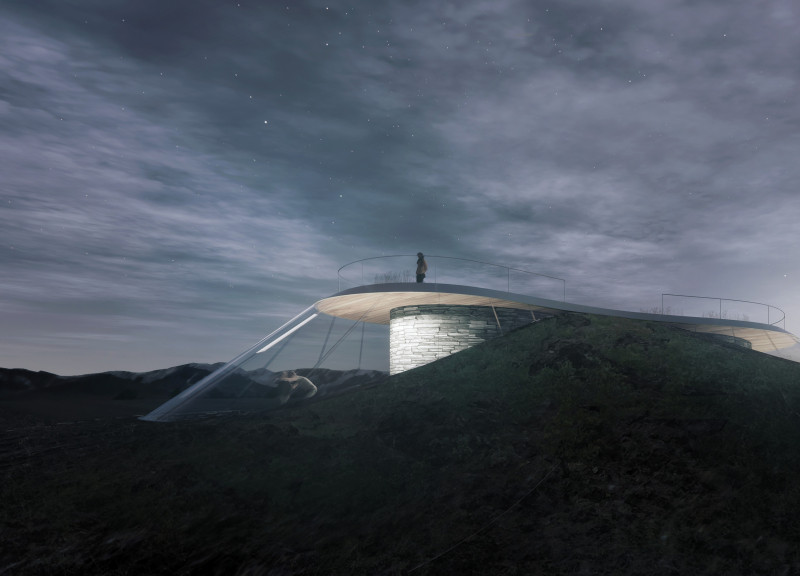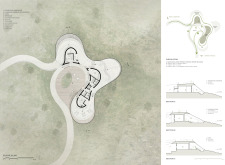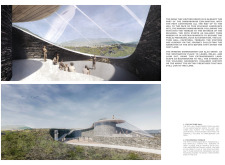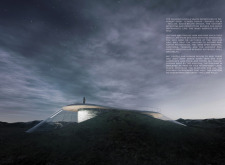5 key facts about this project
The visitor center is located at the junction of three significant landscapes: the Hverfjall Volcano, Myvatn Lake, and the Dimmuborgir Lava Field. It serves as a hub for visitors, allowing them to explore and understand the unique geological context of the area. The overall design concept focuses on blending the built environment with nature, creating inviting spaces that promote interaction with the surrounding landscape.
Pathway Integration
An intricate network of pathways connects the new parking area to existing hiking trails. These pathways vary in width and shape, encouraging exploration while accommodating different visitor needs. The design allows for gentle curves that guide visitors through the site, making it easy to traverse the terrain. This approach softens the transition from built structures to natural surroundings.
Spatial Configuration
Inside the visitor center, public areas such as exhibition spaces, a lecture hall, and a cafeteria are arranged to highlight views of the beautiful landscape. Clear distinctions exist between open and closed areas, allowing visitors to engage at their own pace. This layout creates a sense of discovery, where users can choose how deeply they wish to interact with the programs and exhibits available.
Site Responsiveness
The design is sensitive to the natural features of the site, with careful consideration of existing contour lines and sightlines. The building layout is intentionally designed to showcase specific landscape elements, enhancing the overall visitor experience. This approach reinforces the idea that architecture should respond to its environment, fostering a deeper connection between people and the land.
The structure extends horizontally, creating terraces that merge with the landscape. These areas offer comfortable spaces for relaxation and contemplation. Large windows and openings allow natural light to flood in, framing views that draw the eye to the striking features of the Icelandic landscape. This connection encourages visitors to appreciate the natural beauty surrounding them as they engage with the space.






















































